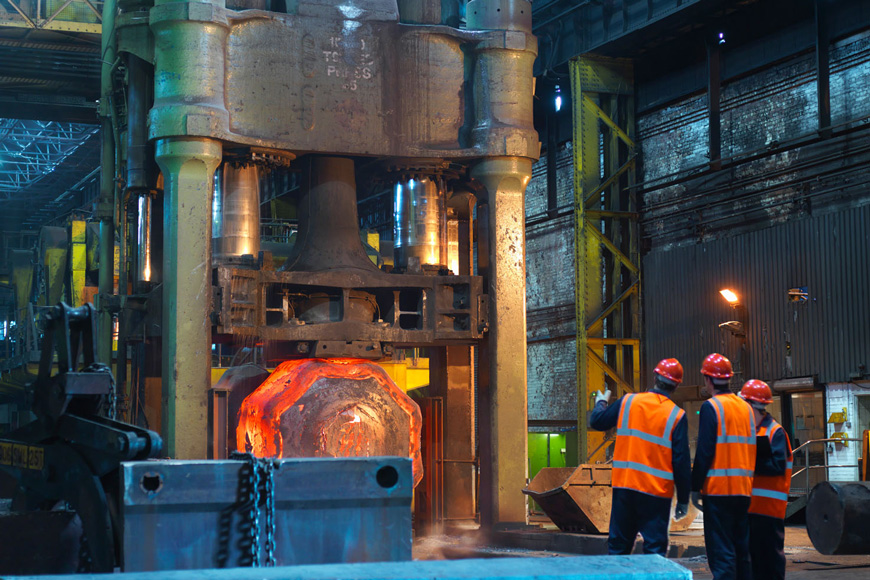
Forging is an ancient craft that has been refined over centuries, combining artistry with engineering precision. In today's modern manufacturing landscape, the art of forging continues to play a vital role in producing high-quality and durable components for various industries.
Forging is a manufacturing process that involves shaping metal using localized compressive forces. The process typically follows these steps:
The forging process begins with the selection of a suitable material, usually metal alloys such as steel, aluminum, or titanium. The choice of material depends on factors such as strength requirements, corrosion resistance, and desired properties of the final component.
The selected metal stock is heated to a specific temperature range to make it more malleable. Heating can be done using various methods, including induction heating, gas furnaces, or electric furnaces, depending on the size and type of material being forged.
Once the metal reaches the desired temperature, it is placed onto the forging equipment, such as a hammer or press. The metal is then subjected to localized compressive forces, causing it to deform and take on the shape of the forging die or mold.
After forming, the forged part is allowed to cool gradually to room temperature. This cooling process helps relieve internal stresses and improves the mechanical properties of the metal.
The forged part may undergo additional processes such as machining, heat treatment, or surface finishing to achieve the desired dimensions, surface quality, and mechanical properties.

The choice of material is crucial in the forging process, as it directly influences the performance and characteristics of the final component. Some factors to consider when selecting materials for forged parts include:
Strength and Durability: The material should possess sufficient strength and durability to withstand the intended application, whether it's in automotive, aerospace, or industrial machinery.
Machinability: Certain materials may be easier to machine or forge than others, depending on their composition and properties. Factors such as work hardening, thermal conductivity, and grain structure play a role in determining machinability.
Corrosion Resistance: Forged parts used in outdoor or corrosive environments may require materials with high corrosion resistance, such as stainless steel or corrosion-resistant alloys.
Cost: Material cost is also a consideration in the selection process, as some alloys may be more expensive than others. It's essential to balance performance requirements with cost considerations to ensure a cost-effective solution.

Forging is both an art and a science, requiring a blend of technical expertise and craftsmanship to achieve the desired results. Some key aspects of technical expertise in forging include:
Die Design: Designing forging dies requires a deep understanding of material behavior, heat transfer, and mechanical properties. The design must account for factors such as material flow, part geometry, and tooling requirements to ensure accurate and repeatable forging processes.
Process Control: Maintaining tight process control is essential for achieving consistent results in forging operations. This includes monitoring variables such as temperature, pressure, and deformation rates to optimize the forging process and minimize defects.
Quality Assurance: Quality assurance practices are integral to ensuring the integrity and reliability of forged parts. This includes inspecting parts for defects, conducting non-destructive testing, and implementing corrective actions to address any issues that arise during production.
In conclusion, the art of forging encompasses a blend of craftsmanship, technical expertise, and engineering precision. From material selection to the forging process and finishing touches, every step requires careful attention to detail to produce high-quality and durable forged parts.
If you want to explore the types and applications of forging processes further, click here.